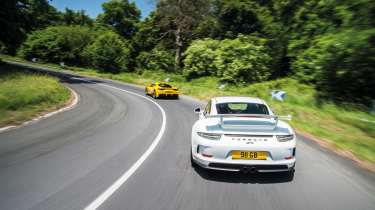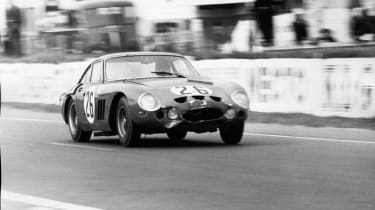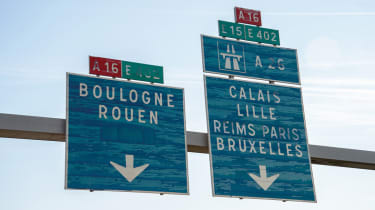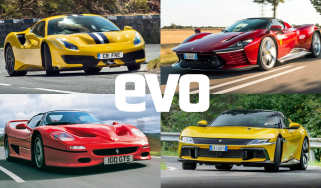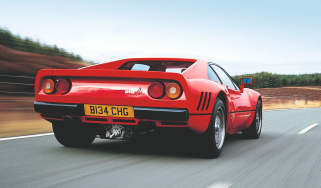Watch - evo's ultimate road trip to Le Mans with a Porsche 911 GT3 and Ferrari 458 Speciale - evo's ultimate road trip to Le Mans page 3 - The history
evo plotted a historical course to the Le Mans 24 Hours in the road-going siblings of cars that do battle at the Circuit de la Sarthe
Part 3: the history
by Adam Towler
When the Ferrari 166 MM of Luigi Chinetti and Peter Mitchell-Thomson won the first post-war Le Mans 24 Hours in 1949, it was also the emergent Maranello firm’s first major motorsport success. Le Mans helped put Ferrari on the map, and ‘Il Commendatore’ was well aware of its significance.
A second victory followed in 1954, a third in 1958. Then, in 1960, ‘the Ferrari years’ began, with six wins on the trot. Such was Enzo Ferrari’s preoccupation with the race, his over-stretched engineers prioritised the development of sportscars over F1 machines, much to the chagrin of the team’s drivers, which included John Surtees.
It was Ford money and cross-Atlantic co-operation that finally broke Ferrari’s vice-like grip, but not without a struggle. Ferrari, humiliated in 1966, counter-attacked strongly in 1967, seizing the Daytona 24 Hours and pushing Ford all the way at Le Mans.
Back in 1951, not long after Ferrari’s first victory, Ferry Porsche had accepted an invitation to enter a car in the Le Mans 24 Hours for the first time. In a pivotal moment for the tiny company, the meek 356 captured a class win and served notice that the Porsche marque could punch substantially above its weight.
This efficient use of limited horsepower characterised Porsche’s early efforts at Le Mans. While Ford and Ferrari were slogging it out, it was the lithe 2-litre Porsches that snapped at their rear wheels on the Mulsanne Straight. By 1969, a 3-litre 908 was fighting John Wyer’s Gulf GT40s to the flag in a tantalising near miss.
It all came to a head in 1970. That year’s race, captured in spirit by the Steve McQueen movie Le Mans, saw 11 Ferrari 512s square up to seven Porsche 917s. The fastest and most glamorous racing cars in the world converged on Le Mans in a battle not just for victory and championship points, but also a struggle for prestige between the old guard and the heir apparent.
In the end it was carnage. Not long after the start the deluge began, and the leading cars crashed or expired in succession. One incident claimed four factory 512s alone. An unfancied 917 entry eventually won, and after 19 years Porsche had finally conquered Le Mans. Ferrari elected to gain experience with its new 3-litre 312 PB prototype in the 1971 championship, given it was the final year the 5-litre cars would be eligible, but knew it wouldn’t have the endurance to be a contender over 24 hours. It was left to privateers to uphold Ferrari’s honour with an updated 512 ‘M’, but Porsche scored another emphatic victory in any case.
That would be the last time the two marques clashed for outright honours. Ferrari skipped Le Mans in 1972, but did contend long-tail 312 PBs in 1973, though they had to give the best to Matra. That was the end of the factory team in sportscar racing, and ever since the marque has only fielded an in-house squad for F1.
After the financial madness of the 5-litre years, Porsche regrouped in the early 1970s via separation from Porsche and Piëch family influence. The works team had their first serious crack at Le Mans again in 1974, a year after Ferrari’s exit, with the 911 Turbo RSR; they’d win with the 936 in 1976. Over the course of the next 22 years Porsche collected an astounding 14 outright victories, demolishing Ferrari’s once-thought unsurpassable record. The final victory (until 2015) arrived in 1998 with the GT1-98, and then, too, Porsche was gone from the top level at Le Mans: a V10 contender was canned and turned into the Carrera GT supercar, with money directed instead towards a certain SUV.
Porsche debuted the 996 GT3 R in 1999, and 911-based racers and Ferrari ‘baby’ V8-based cars have spent the past 15 years battling in the GT class at Le Mans with factory and privateer representatives. Each has had its period of dominance, the pendulum swinging back and forth through successive generations of machinery. Now, in 2015, Porsche once again claims the biggest prize. With the revival of sportscar racing and Le Mans in particular, how long can Maranello afford to ignore its old adversary?
